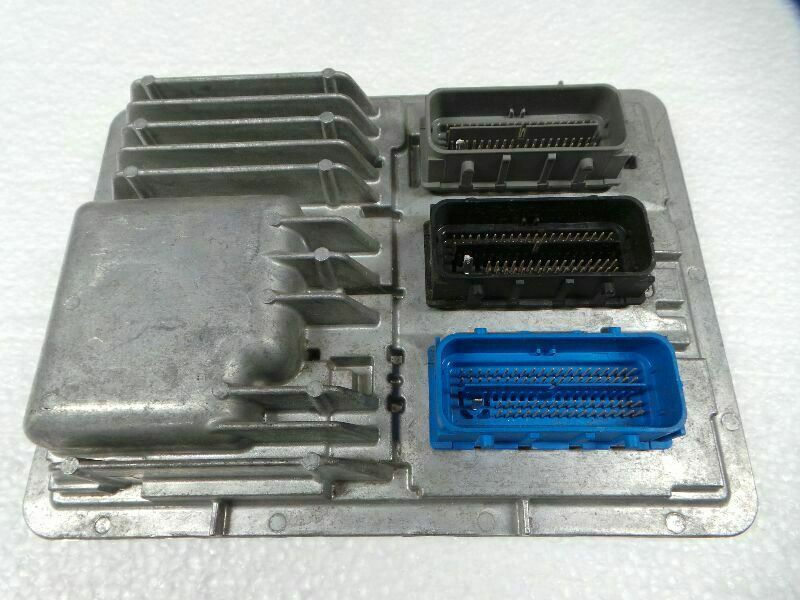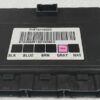Restore Your Vehicle’s Brainpower: VIN-Programmed Engine Control Module
Dealing with erratic engine behavior, a persistent Check Engine Light, or a vehicle that refuses to start can be incredibly frustrating. These are often hallmark signs of a failing Engine Control Module (ECM), the central computer responsible for managing your engine’s performance, fuel efficiency, and emissions. This isn’t just a part; it’s the command center of your vehicle. We offer a dependable and cost-effective solution with this genuine, used OEM Engine Control Module, service number 12669908.
What sets our ECMs apart is the critical pre-programming service we provide. Before this module ships, we flash it with the latest official GM software calibrations specifically for your vehicle. All we need is your Vehicle Identification Number (VIN) at checkout. This vital step saves you from needing the expensive initial programming at a dealership, streamlining your repair process. Get the performance of a correctly calibrated module without the dealership price tag.
Is Your GM Vehicle Showing These Symptoms?
- ✔ Check Engine Light is on with communication or internal processor codes (e.g., P0601, P0606, U0100).
- ✔ The engine cranks but refuses to start.
- ✔ Unexplained drops in fuel economy or engine power.
- ✔ Intermittent stalling, rough idling, or engine misfires.
- ✔ Automatic transmission shifting issues or harshness.
- ✔ Other modules in the vehicle cannot communicate with the ECM.
A Technician’s Notebook: The Malibu That Stumped Everyone
A 2018 Malibu came into my bay with a complaint of intermittent stalling at stoplights. No codes were stored, and every time I had it, it ran perfectly. The customer had already replaced the battery and spark plugs. After data-logging a long test drive, I caught it: a momentary drop in 5-volt reference voltage from the ECM, just before the stall. This tiny glitch, invisible to most scans, was the ECM’s internal power supply failing under load. We replaced the ECM with a VIN-programmed unit like this one, performed the quick security relearn, and the problem was solved for good. It’s a reminder that with modern cars, the computer is often the culprit behind the most elusive mechanical symptoms.
Your Straightforward Installation Guide
- ✔ Safety First: Always disconnect the negative terminal from your vehicle’s battery before starting any electronic component replacement.
- ✔ Locate the ECM: On most compatible models, the ECM is found in the engine compartment, typically on the driver’s side (LH) or above the battery. Refer to a service manual for your specific vehicle if unsure.
- ✔ Disconnect and Remove: Carefully unplug the electrical connectors. They have locking tabs that must be released. Once disconnected, unbolt the old ECM from its mounting bracket.
- ✔ Install the New Module: Mount the new, pre-programmed ECM in place and securely fasten it. Reconnect the electrical harnesses, ensuring they click into place.
- ✔ Reconnect Power: Reattach the negative battery terminal.
- ✔ Perform Final Relearns: This is a critical step. The Vehicle Theft Deterrent (VTD) system must be synchronized with the new ECM. This procedure often requires a scan tool with GM software (like TIS2WEB) and is necessary if the vehicle does not start. Other procedures like a crankshaft position variation relearn may also be required. This is the responsibility of the installer.
Will This Fit My Vehicle?
This ECM is a confirmed fit for a wide range of General Motors vehicles matching service number 12669908. Please verify your part number and application from the list below:
- 2017-2018 Chevrolet Volt: (Gasoline, LH front engine compartment) – ID 12669908
- 2017-2018 Chevrolet Cruze: (Gasoline)
- 2017-2018 Chevrolet Malibu: (Various engines, LH engine compartment)
- 2018-2019 Chevrolet Equinox: (1.5L or 2.0L, LH engine compartment) – ID 12669908 on 1.5L
- 2017-2018 GMC Acadia: (2.5L, VIN Z)
- 2018 Buick LaCrosse: (2.5L)
- 2018 Buick Regal: (2.0L, LH engine compartment)
- 2017 Cadillac ATS: (2.0L, LH engine compartment)
- 2017 Cadillac CTS: (2.0L)
Note: This is a used part sourced from a salvaged vehicle, inspected for quality and function. It offers a reliable repair at a fraction of the cost of a new component.
Frequently Asked Questions
Why do you need my VIN?
Why do you need my VIN?
Your VIN is essential for us to program the ECM with the correct software and calibrations specific to your vehicle’s exact configuration. This ensures proper engine function, transmission shifting, and compatibility with other onboard systems.
What is a Vehicle Theft Deterrent (VTD) relearn?
Why do you need my VIN?
Your VIN is essential for us to program the ECM with the correct software and calibrations specific to your vehicle’s exact configuration. This ensures proper engine function, transmission shifting, and compatibility with other onboard systems.
Is this a new part?
Why do you need my VIN?
Your VIN is essential for us to program the ECM with the correct software and calibrations specific to your vehicle’s exact configuration. This ensures proper engine function, transmission shifting, and compatibility with other onboard systems.
Do I need to do any other relearns?
Why do you need my VIN?
Your VIN is essential for us to program the ECM with the correct software and calibrations specific to your vehicle’s exact configuration. This ensures proper engine function, transmission shifting, and compatibility with other onboard systems.
What if my vehicle is not on the compatibility list?
Why do you need my VIN?
Your VIN is essential for us to program the ECM with the correct software and calibrations specific to your vehicle’s exact configuration. This ensures proper engine function, transmission shifting, and compatibility with other onboard systems.



